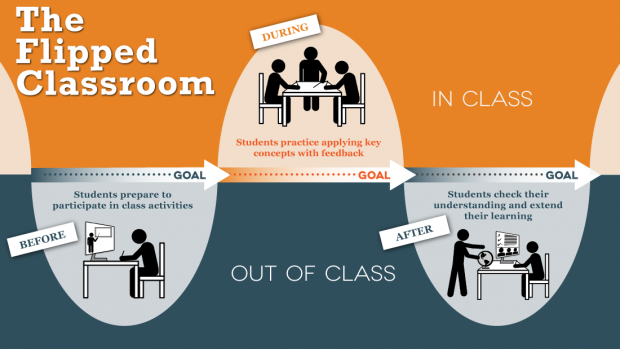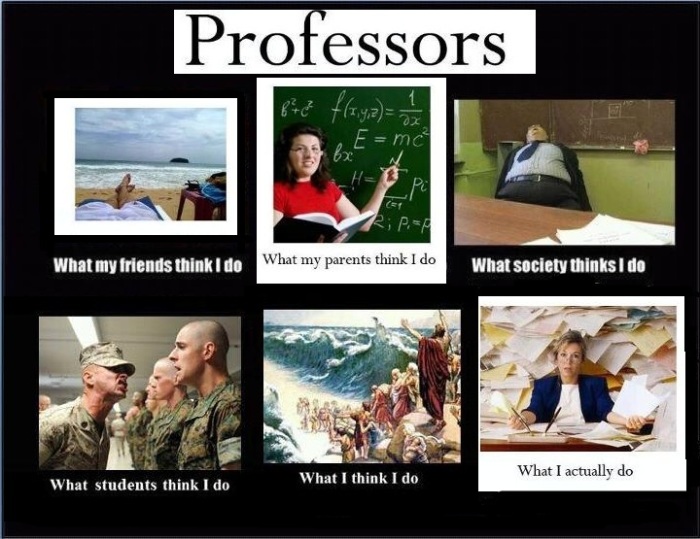
What a journey it has been to write a blog every day this semester. I summarized my experience in an article I hope to publish and parlay into conference presentations:
Blogging for Beginners: Recording a Semester of Teaching Online
In creating a daily digital diary, www.teachingwritignonline.wordpress.com , I documented what it was like to teach a fully online teaching load. I blogged for 116 days during the 16-week Spring 2016 semester, recording the challenges, successes and unpredictable events that occur while teaching in a virtual environment. The blog captures anecdotal evidence regarding a variety of technology related topics including College policy, student access and course design.
This is the first time in our department’s history that a faculty member in English has been assigned a completely online teaching load. Two of my colleagues, Nicole Matos and Jason Snart are also teaching variations of a fully online load (combining hybrid and online courses) and we have been sharing our semester pilot experiences, but I am the only faculty member in our group teaching all online courses in 16, 12 and 8-week formats this semester. This teaching assignment was supported and approved by our Associate Dean, Sheldon Walcher.
I wasn’t required to produce a blog about my online teaching experience, but choosing to archive each day was a way to explore and extend professional discourse within our discipline. We’re all at different stages in our digital journey. A lot has changed since I first began working with an Apple IIe personal computer in the 1980s. As technology continues to rapidly evolve in our classrooms, it is important to share ideas. I dove head first into blogging and the content flowed.
My blogging framework was informed by Karen Swan’s constructivist approach to online learning (2009), but one particular influence was the essayist and screenwriter Nora Ephron, who used to say to her family and friends, “Everything is copy.” I had a lot to say every day I logged on. I captured some of the nuances of teaching online and began to find patterns as my ideas emerged. In my daily posts I examined student-teacher interaction online, classroom community online, motivation online and frustration online. How is this behavior different than what we experience in a traditional face-to-face classroom? Are there notable differences? How can we identify the differences and create a successful environment for learning and teaching online?
I taught myself how to use WordPress to create and format a self-hosted blog. It is a free service with intuitive customizable features. There are many blogging options available including Weebly,Blogger, Penzu, Wix and more. I previously created an e-portfolio in Weebly and wanted to try a new platform. I had also used the blogging feature with students in our learning management system, Blackboard. I jumped into blogging knowing I could call upon our Learning Technologies Department including Brett Coup, Lara Tompkins and Min Pan, all innovative technology experts, ready and willing to assist in technical trouble shooting questions I posed about the blogging platform.
I chose the blog name “teaching writing online” to expand my audience to faculty, students and staff. Joining the blogosphere, I added my voice to the many blogs now available online. Christina Sabo, Web Content Editor, currently hosts a blog called “The Digital Quad,” www.digitalquad.cod.edu, at College of DuPage. This blog is described as “A place for students to get tips and tools to help them excel at online learning, find out more about online college news and COD Online faculty, and to develop the skills needed to be not only a successful student, but also a successful professional.”
The blog I created can be distinguished as a behind the scenes look at teaching online while carrying out a rigorous daily blog publishing schedule. My mantra is “Every day another line.” Or as Anne Lamott put it in her book Bird by Bird: Some Instructions on Writing and Life, “Don’t look at your feet to see if you are doing it right. Just dance.”
This project grew out of an article I published last year called “Using a Blog Throughout a Research Writing Course” for Online Writing Instruction (OWI) Open Resource www.ncte.org/ccc/owi-open-resource/blog-research-writing where I assigned English 1102 students a course blog to collect research material and reflect on that material as the course progressed. The blog acted in the way a physical research portfolio might, but offered the digital equivalent, ideal for use in an entirely online class setting. But the most remarkable use of a blog is that it opened the lines of communication and reinforced my commitment to encourage group interaction within the class.
After successfully establishing a classroom blog, I developed my own blog to connect a professional writing initiative with personal self-reflection of my teaching philosophy. In Alive in the Writing, Kirin Narayan refers to ethnography in consciously spending time to explore oneself. She does this, she reveals, by producing one handwritten page each morning. “The page could be about anything at all, and is above all a way to be with myself. I find that this solitary, inward-turning writing practice helps me sort through thoughts, images, feelings, stories. Finding words for the fluctuating welter of each day’s inner themes can grant me a more limber and confident voice for writing that faces outward, as a performance for others” (88). A daily blog serves the same function. My blog invites perspective and analysis of how and why we are teaching.
Launching a public web presence was daunting and required a learning curve. I discovered the traditional rules of composition don’t apply when blogging. Blog posts generally include short paragraphs with little regard to grammar or mechanics. Bullet points, graphics and lists are encouraged. Because blogs appear on screen, many readers are likely to skim information, absorbing points of reference in a short amount of time. But many of my blog posts were lengthy. I had to adapt to a completely different approach to writing, thinking in 700-1000 word chunks. It took awhile to find a rhythm in the blog. In daily blogging I had to be consistent, not sporadic. I committed to writing the blog and embraced the discipline of writing every day. Balancing the pace of blogging in recording online teaching life was a productive, innovative activity that I highly recommend. It is a unique systematic practice of tuning into teaching responsibilities and making it a permanent record online.
Engaging in this digital diary reminded me of the Verizon cell phone company commercials that tout the catch phrase, “Can you hear me now?” When I first published the blog on WordPress I wondered what impact it could make. How could I carve out a special niche for online teaching and learning at College of DuPage? I posted each day, illustrating examples of teaching online. I wanted the blog to be a useful resource for faculty and students. My goal was to create and compile a digital archive – to distill the mass information about technology into a tailored version for our community college.
The results of maintaining a daily blog are clear. This blog provided a forum for the multiplicity of voices discussing how and why we use computer technology to benefit the teaching and learning process. Tracking the number of views and broadening the blog platform to social media like Facebook, Tumblr and Twitter invites more voices to participate. A blog provides creative freedom to marinate in the every day activities we undertake in our vocation. Blogging is a way to release what we do on our virtual journey and discover how it resonates with others. For example, Day 43 “Excuses, Excuses” struck a chord with many viewers. I blogged about gathering a list of eclectic excuses for students missing deadlines or not submitting online assignments throughout the semester. The blog was re-posted on our English at COD Facebook group page and I received a positive response in sharing anonymous student excuses. My colleagues stopped me in the hallway after reading my blog and we brainstormed ways to possibly curb excuses in the future by modifying our assignments and revisiting deadlines. We agreed on yielding to students with a combination of guidelines and grace. And Day 71 “Standardized Tests” stirred up dialogue because we have adopted a new online placement test, Accuplacer, at College of DuPage and faculty are in the beginning stages of analyzing new cut scores, finding test practice websites for our students and closely looking at how this test can possibly align with our curriculum. Once again, the blog sparked a virtual roundtable of opinions and actively moved the conversation.
Teaching online effectively is something we can share with one another to help our students succeed. As Chair of the Teaching with Technology Committee, I am an active participant in exchanging ideas with colleagues regarding best practices in teaching online courses. We meet as a group a few times per month, record meeting minutes and post our agenda items in a Blackboard shell. But a blog is different. It captures a robust amount of material for highlighting our instructional practices. It is a stream of consciousness style of writing that strengthens our motivation to contribute to the conversation. This blog is available 24/7 for teachers to tap into. It is a different way to make meaning as we search for something new and sometimes outside of our comfort zone. In sharing my daily blog, I can provide potential teaching and learning strategies for success and retention in an online class. My posts cover a myriad of topics we encounter everyday at College of DuPage such as advising, transfer and student persistence in a candid and accessible voice. Blog posts can be downloaded, copied and distributed to promote further discussion and dialogue.
One of the biggest challenges I faced when creating the blog was finding my voice. I was inspired by Scot Warnock in his blog “Online Writing Teacher,” where he struggles with the kind of persona he wanted to project as an online teacher. He echoes Peter Elbow who once said that real voice has the power to make you pay attention and understand. Blogging every day creates a raw sense of vulnerability and openness to the public eye. Who would be reading my blog? Why would they be reading my blog? Would we share similar interests in seeking innovation in online instruction? These questions informed my teaching of the writing process. I looked at word choice, crafting sentences and developing paragraphs with new eyes. I told my students about struggling to play with words on the screen. They especially liked that I admitted that we are the same in that way – we all work to gather ideas and put them out into the world.
The blog can be categorized into two areas: my academic voice and my personal voice. During the first 30 days of blogging my academic voice is front and center. I write from a buttoned up tweed suit style, logging class roster information and college online policies. But eventually I developed a unique message to share. In fact on Day 44 in a blog titled “Control, Alt, Delete: Reset is Best,” my following and number of views spiked. I received my first comment on the blog site I created. The comment was about creating a blank slate and starting over, “I well remember when I was battling the Taxpayer’s Ticket folk in the blogs, reading what they had posted, doing my research and formulating a response, only to sometimes find an hour or two in that I wasn’t on the right track. Away it went, and I’d start over. I have always felt that the writing process helped me better understand the issues and formulate a stronger position than just reading about any given issue.” The commenter was right on target as we shared a common experience. Our voices were in sync.
Donald Murray refers to using multiple voices, declaring that we need to find a model of effective personal academic prose, demonstrating how we can combine the two languages of our profession. To identify and distinguish each voice is important not only for us, but for our students.
By creating this blog, I feel more confident in sharing my experience with students about the writing process, the challenges and success in using technology and the educational journey we take together. Each day I wrote the blog my voice was amplified. I broke into the 100th day blog post with a renewed energy in creating a deep and meaningful learning experience.









